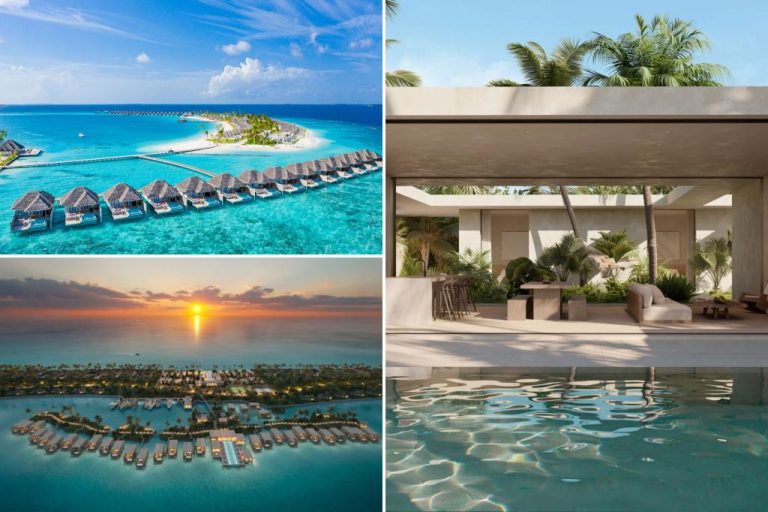Florida’s Wall Street South affluent crowd is about to experience a new high-end retirement — and they can save themselves a trip to the Palm Beaches to do it.
Developer Rafael Reyes, owner of Rockwell Island Development Group, is transforming Bimini, a Bahamian island just 48 nautical miles off the coast of Florida, into a luxurious getaway for Miami’s elite, Bloomberg Reports.
Miami, now ranked 33rd in the world for its millionaire residents, is home to a growing number of wealthy professionals.
For the estimated 4 million Miamians with boats, Reyes said, the drive to Bimini can be as short as 40 minutes.
A high-speed ferry is this time frame, while standard ferries take around 90 minutes. A helicopter ride with a local charter like HeliFlite shortens the trip to 25 minutes.
Currently, Bimini does not have 5-star amenities, but Reyes is quickly changing that. His ambitious plans include a series of restaurants and beach clubs, like an outpost of Bonito de St. Barts and Aspen’s Betula.
Following that, 54 waterfront mansions have a starting price of $3.5 million, each including a pool, 90-foot dock and custom garages for Moke Jeeps.
The residences will be built in phases, with the first being delivered in early 2025
A beach club created by Sir Richard Branson to cater to Virgin cruise passengers has joined the line-up.
The centerpiece is planned for 2026: a Banyan Tree resort featuring the country’s first overwater villas – an aesthetic very reminiscent of the Maldives – priced at $3,000 a night, spread across four artificial islands facing a vast lagoon.
This will be part of the new master-planned community, Rockwell Island, with an overall cost of approximately $245 million, in addition to $80 million in public-private funding for expanding the airport to accommodate flights direct from the main American airlines.
“Bimini used to be a very popular place,” Reyes told the outlet, referring to its heyday during Prohibition, when it was the closest escape from alcohol restrictions for Americans. “Those were the glory days of Bimini…I’m trying to reestablish that now.”
Spanning 5 square miles, Bimini is surrounded by clear, shallow waters. The Reyes Company, a subsidiary of RAV Bahamas Ltd., has acquired more than half of the island since the 1990s, developing infrastructure including a seaplane port, helipads and a ferry terminal.
His efforts also led to the opening of the largest marina in the Bahamas’ “family islands,” with 242 slips.
“There are all these people who bring their ships and mega yachts from the Mediterranean every year,” Reyes added. “So how can we attract them? You lure them in by creating an extravagant food and drink experience, then sending out a tender to pick them up where they dock offshore.
Bonito, which will open this summer, will be followed by two or three other prestigious restaurants. Plans include a toes-in-the-sand beach bar offering upscale Italian cuisine. Although Banyan Tree won’t be fully operational for a few years, its overwater spa and restaurants will open in phases to serve residents and boaters.
The Banyan Tree resort will feature 50 rooms and villas, designed as floating ivory jewel cases with outdoor living spaces and private plunge pools. The main swimming pool and restaurant will extend over the sea on stilts.
Gabriel Gn, Banyan Group’s head of business development, considers the Bimini resort a flagship property, essential to the brand’s expansion in the Americas.
“Bimini will be one of the most beautiful properties in our entire portfolio – a mini Maldives,” Gn said, noting that it is Banyan Tree’s first resort offering overwater bungalows.
Building accommodation on stilts in the Caribbean is a challenge. Only a few resorts, like Sandals in Jamaica and St. Vincent, have succeeded because of strict government regulations protecting the coasts.
Reyes emphasizes that their construction methods are environmentally friendly, transplanting corals and designing lighting to minimize disturbance to wildlife. Part of the territory remains unexploited to preserve a mangrove forest essential to marine life and fishing.
Reyes says infrastructure improvements, including water treatment and power plants, will benefit local communities, creating 200 jobs at the Banyan Tree resort and nearby restaurants. However, this high-end development is unlikely to meet the needs of the average Bahamian resident.
“When New Yorkers take off on a seaplane or helicopter, they go to the Hamptons. I’m trying to create that same concept in a Caribbean way,” Reyes said.
Miami-based architectural firm Oppenheim Architecture is leading the design efforts for the residences and resort, and locally based OFFICIAL is overseeing sales of the residences.

